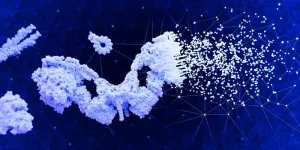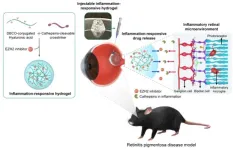(Press-News.org) A new artificial intelligence (AI) tool that draws logical inferences about the function of unknown proteins promises to help scientists unravel the inner workings of the cell.
Developed by KAUST bioinformatics researcher Maxat Kulmanov and colleagues, the tool outperforms existing analytical methods for forecasting protein functions and is even able to analyze proteins with no clear matches in existing datasets[1].
The model, termed DeepGO-SE, takes advantage of large language models similar to those used by generative AI tools such as Chat-GPT. It then employs logical entailment to draw meaningful conclusions about molecular functions based on general biological principles about the way proteins work.
It essentially empowers computers to logically process outcomes by constructing models of part of the world — in this case, protein function — and inferring the most plausible scenario based on common sense and reasoning about what should happen in these world models.
“This method has many applications,” says Robert Hoehndorf, head of the KAUST Bio-Ontology Research Group, who supervised this research, “especially when it is necessary to reason over data and hypotheses generated by a neural network or another machine learning model,” he adds.
Kulmanov and Hoehndorf collaborated with KAUST’s Stefan Arold, as well as researchers at the Swiss Institute of Bioinformatics, to assess the model’s ability to decipher the functions of proteins whose role in the body are unknown.
The tool successfully used data regarding the amino acid sequence of a poorly understood protein and its known interactions with other proteins and precisely predicted its molecular functions. The model was so accurate that DeepGO-SE was ranked in the top 20 of more than 1,600 algorithms in an international competition of function prediction tools.
The KAUST team is now using the tool to investigate the functions of enigmatic proteins discovered in plants that thrive in the extreme environment of the Saudi Arabian desert. They hope that the findings will be useful for identifying novel proteins for biotechnological applications and would like other researchers to embrace the tool.
As Kulmanov explains: “DeepGO-SE’s ability to analyse uncharacterized proteins can facilitate tasks such as drug discovery, metabolic pathway analysis, disease associations, protein engineering, screening for specific proteins of interest and more.”
END
AI tool predicts function of unknown proteins
2024-02-14
ELSE PRESS RELEASES FROM THIS DATE:
Promising new therapeutic approach for treating metastatic pancreatic cancer
2024-02-14
A research paper published today (14 February 2024) in Nature Cancer details new insights into the role of efferocytosis – the burying of dead cells – in pancreatic cancer that spreads to the liver.
Liver metastasis occurs in 40–50% of people with pancreatic ductal adenosarcoma (PDAC), and there are currently no effective therapies to cure pancreatic cancer patients that have liver metastasis.
Led by University of Liverpool’s Professor Michael Schmid and colleagues, this study found PDAC metastases to show high levels of immunosuppressive macrophages, a type of white blood ...
Neuronal insights: flash and freeze-fracture
2024-02-14
Fear and addiction exert significant influence within society. Managing them is often challenging, as they are driven by intricate neuronal circuits in our brains. Understanding the underlying molecular mechanisms is crucial to intervene when these processes malfunction. Pioneered by scientists at the Institute of Science and Technology Austria (ISTA), the novel “Flash and Freeze-fracture” technique provides a unique glimpse into the respective brain region. The results were recently published in the journal PNAS.
While looking for food, a bird encounters a fox. It gets away just in time, but the sight ...
Tiny crustaceans discovered preying on live jellyfish during harsh Arctic night
2024-02-14
In the dark and cold of the months-long polar night, food resources are limited. Some groups of marine organisms in the polar regions overcome this challenge by going into a metabolic resting state in winter, surviving on reserves accumulated during the short growth season. But others, such as several species of marine zooplankton, have evolved a different strategy: they shift from a specialized to an omnivorous diet during the polar night, profiting from a wide range of potentially less rewarding foods that are available throughout the year.
Now, ...
It's award season: let's celebrate microbes in movies
2024-02-14
Elche (Spain), January 22, 2024. Usually, show business depicts viruses, bacteria, and other microorganisms as one of the worst menaces to humankind. Entertainment movies influence the way audiences understand and perceive these topics. Yet, few films accurately portray the science of microbiology and its social implications. Movies and TV series often feature outbreaks of deadly diseases and the efforts of scientists and medical professionals to contain them. However, entertainment movies can also educate the public about the importance and the impact ...
New treatment developed to dramatically slow down the progression of blindness-causing retinal diseases
2024-02-14
The Korea Institute of Science and Technology (KIST) announced that Dr. Maesoon Im of the Brain Science Institute, together with Prof. Seung Ja Oh of Kyung Hee University and Prof. Kangwon Lee of Seoul National University, successfully incorporated anti-inflammatory drugs into a hydrogel to suppress inflammation in the retina and effectively deliver the drugs to the inflamed area.
Age-related macular degeneration and retinitis pigmentosa are incurable eye diseases that cause blindness due to the gradual damage of photoreceptor cells, which convert light into biological signals in the retina, the light-sensitive tissue at the back of the eye. Age-related macular degeneration is a condition ...
Menopause and migraines: New findings point to power of prevention
2024-02-14
For middle-aged women plagued by migraines, or hot flashes and night sweats, another worry may linger in the backs of their minds: whether these experiences have set them up for a heart attack, a stroke or another cardiovascular crisis.
After all, past research suggesting such a link during and after menopause has gotten a lot of attention.
But a pair of new studies in the journal Menopause suggest that most of them don’t need to worry as much, especially if they don’t have both migraines and long-term hot flashes and night sweats.
Instead, they should focus on tackling the ...
The combination of migraine and persistent hot flashes could prove deadly
2024-02-14
CLEVELAND, Ohio (Feb 14, 2024)—Hot flashes and migraine (particularly with aura) have been shown to be individual risk factors for cardiovascular disease because of associated poorer heart disease riskfactor profiles. A new study, however, is the first to examine the joint influences of migraine and hot flashes/night sweats (vasomotor symptoms) independent of traditional heart disease risk factors and estrogen use. Research results are published online today in Menopause, the journal of The Menopause Society.
Specifically, ...
Acupuncture may curb heightened risk of stroke associated with rheumatoid arthritis
2024-02-14
A course of acupuncture may curb the heightened risk of stroke associated with rheumatoid arthritis, finds a comparative study published in the open access journal BMJ Open.
The effects seem to be independent of sex, age, medication use, and co-existing conditions, the findings indicate, prompting the researchers to suggest that the procedure may reduce levels of pro-inflammatory proteins (cytokines) in the body that are linked to cardiovascular disease.
The principal cause of death in people with rheumatoid arthritis is cardiovascular disease. And they are more likely to have a stroke than ...
Poor quality clinical data informing NICE decisions on treatments in over half of cases
2024-02-14
The quality of evidence submitted to the National Institute for Health and Care Excellence (NICE) for informing its decisions to recommend technologies for use in the NHS was poor in more than half of cases, reveals a 20-year analysis, published in the open access journal BMJ Open.
And the data quality submitted for health technology appraisals by manufacturers between 2000 and 2019 was consistently poor, with no improvement during that time, the analysis shows.
NICE advises the NHS on the ...
Age when periods first start and early menopause linked to heightened COPD risk
2024-02-14
A range of reproductive factors, including age when periods first start and an early menopause, are all linked to a heightened risk of COPD—the umbrella term for progressive lung conditions that cause breathing difficulties—finds research published online in the journal Thorax.
Miscarriage, stillbirth, infertility, and having 3 or more children are also associated with a heightened risk of COPD, which includes emphysema and chronic bronchitis, the findings show.
Recent evidence indicates substantial gender differences in susceptibility ...





